Decoding Market Movements: Why Do Stock Futures Rise?
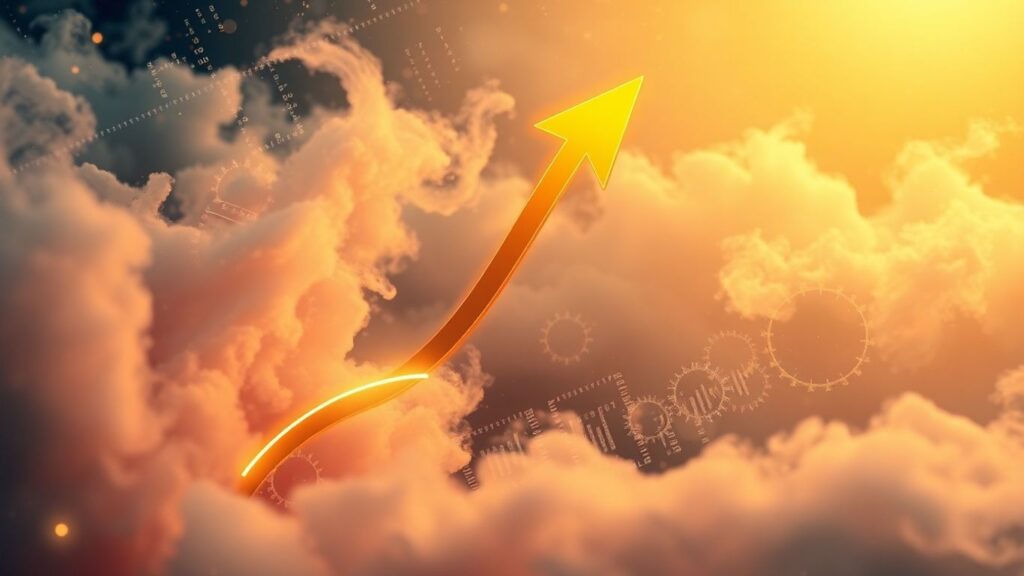
Ever wondered why stock futures sometimes seem to have a mind of their own, jumping up seemingly out of nowhere? It’s not just random chance. A bunch of things can push those futures prices higher, and understanding them is key if you’re trading or just trying to get a handle on the market. We’re going to break down some of the main reasons why you might see stock futures rise, from big economic news to what companies are up to. It’s all about connecting the dots.
Key Takeaways
-
Economic indicators like GDP growth and strong employment numbers often signal a healthy economy, which can lead to higher stock futures prices as confidence grows.
-
Company-specific news, especially positive earnings reports and strategic announcements, can directly boost a company’s stock and, by extension, its futures contracts.
-
Global events, while often causing volatility, can sometimes create optimism or specific sector demand that pushes futures higher, depending on the nature of the event.
-
Trading volume and open interest can show strong buying interest, suggesting that traders expect prices to move up, thus contributing to rising futures.
-
Trading strategies focused on upward trends or hedging against future drops can also influence the demand for futures, potentially pushing prices higher.
Understanding the Drivers of Stock Futures
Stock futures, like those tied to the Dow Jones Industrial Average, are more than just abstract numbers; they’re a reflection of what traders and investors anticipate for the market’s future. They act as a sort of crystal ball, offering clues about where the broader stock market might be headed. When you see futures prices moving, it’s often because people are reacting to new information or shifting their expectations about the economy and corporate health. These contracts allow market participants to express their views on future market direction before the regular trading session even opens.
Economic Indicators Shaping Market Sentiment
Economic data releases are like the daily weather report for the financial markets. When key indicators come out, they can significantly sway how people feel about the economy’s strength, which in turn affects stock futures. Think about things like inflation reports, manufacturing surveys, or consumer confidence numbers. If these reports are better than expected, it suggests the economy is humming along nicely, and people might feel more optimistic about company profits, pushing futures prices up. Conversely, disappointing data can signal trouble ahead, leading to a sell-off in futures.
-
Inflation Data: Higher-than-expected inflation can signal potential interest rate hikes, which might dampen stock market enthusiasm.
-
Consumer Confidence: Strong confidence suggests people are willing to spend, which is good for businesses.
-
Manufacturing Activity: Indicators like the ISM Manufacturing PMI show the health of the industrial sector.
The collective sentiment derived from these economic signals forms the bedrock upon which many trading decisions are made. It’s a constant feedback loop where data influences perception, and perception drives market action.
The Impact of Interest Rate Decisions
Central banks, like the Federal Reserve in the U.S., have a massive influence on stock futures through their interest rate policies. When interest rates are low, borrowing money is cheaper for companies, which can encourage investment and expansion, often leading to higher stock prices and futures. It also makes bonds less attractive, potentially pushing investors towards stocks for better returns. However, if rates start to climb, borrowing becomes more expensive, potentially slowing down economic growth and making stocks less appealing compared to fixed-income investments. This shift can cause stock futures to decline.
Analyzing Employment Figures and GDP Growth
Two of the biggest pieces of the economic puzzle are employment and Gross Domestic Product (GDP). Strong employment numbers, meaning lots of people are working and earning, usually translate to more consumer spending, which is great for businesses. Similarly, robust GDP growth indicates that the economy is expanding. When these figures are positive, they paint a picture of a healthy economy, and stock futures tend to react favorably. Traders watch these reports closely because they provide a broad snapshot of the economy’s overall health and its potential for future growth.
Global Events and Geopolitical Influences
It’s not just about numbers and charts; the world stage plays a massive role in how stock futures move. Think of it like this: a big international event can send ripples through the market, affecting everything from major companies to smaller businesses. These global shifts can create uncertainty, and uncertainty often leads to price swings in futures contracts.
Political Instability and Policy Changes
When governments are unstable or policies change suddenly, it can make investors nervous. Elections, new laws, or even just political disagreements can make people question the future economic landscape. This nervousness can cause traders to adjust their positions in stock futures, sometimes leading to a quick drop or rise in prices as they try to get ahead of potential problems or opportunities.
Geopolitical Tensions and Trade Dynamics
International relations are a big deal for markets. Trade wars, diplomatic spats, or conflicts between countries can disrupt supply chains and affect how businesses operate globally. For example, if two major economies start imposing tariffs on each other, companies that rely on importing or exporting goods might see their profits squeezed. This can directly impact their stock prices and, consequently, the futures tied to them. It’s all about how these tensions affect the bottom line of companies.
Major Global Events and Market Volatility
Sometimes, events happen that are completely outside the usual political or trade sphere, but they still shake things up. Think about natural disasters, like a major earthquake hitting a key manufacturing region, or global health crises, like a pandemic. These kinds of events can halt production, disrupt travel, and change consumer behavior overnight. The market reacts to this sudden change, and stock futures can become quite volatile as traders try to figure out the long-term consequences. It’s a reminder that the market doesn’t operate in a vacuum; it’s connected to the real world.
The interconnectedness of global economies means that events in one part of the world can quickly influence markets elsewhere. Traders often watch international news closely, looking for any sign of disruption or opportunity that could affect the value of their investments.
Corporate Performance and News Catalysts

When we talk about what makes stock futures move, you can’t ignore what individual companies are up to. It’s not just about the big economic picture; what happens inside a company can send ripples through the market, affecting futures contracts.
Interpreting Corporate Earnings Reports
Companies put out their financial results every few months, and these reports are a big deal. They tell us how much money a company made (revenue) and how much it kept after expenses (profit). If a company beats what analysts expected, its stock price often jumps. On the flip side, if they fall short, the stock can take a hit. This is especially true for futures, as traders try to guess these outcomes ahead of time. For example, if a major tech company reports strong profits, futures tied to tech indexes might climb. It’s all about expectations versus reality.
Here’s a quick look at what to watch for:
-
Revenue Growth: Is the company selling more stuff than before?
-
Profit Margins: How much profit is it making on each dollar of sales?
-
Future Outlook (Guidance): What does the company think will happen next quarter or next year?
-
Analyst Ratings: What do the pros say about the stock after the report?
The market often reacts not just to the numbers themselves, but to how those numbers compare to what people were already expecting. A ‘good’ number might not move the market if it was already priced in, while a ‘bad’ number could cause a surprise sell-off.
Company-Specific News and Strategic Announcements
Beyond the regular earnings calls, other news can really shake things up. Think about big events like a company announcing it’s buying another company (a merger or acquisition) or if a key executive decides to leave. These kinds of announcements can cause a stock’s price to swing wildly, and that movement can definitely influence futures. For instance, news about a major company making a significant strategic announcement, like entering a new market or developing a new product, can lead to stock market futures gains. It’s these specific, often unexpected, events that can create a lot of buzz and trading activity.
The Role of Trading Volume and Open Interest
When you’re looking at stock futures, it’s not just about the price going up or down. You also need to pay attention to how much trading is actually happening. That’s where trading volume and open interest come in. They’re like the pulse of the market, showing how much activity and commitment there is behind those price moves.
Gauging Market Activity with Volume
Think of trading volume as the number of contracts that changed hands during a specific time. A big jump in volume when prices are moving suggests that a lot of people are actively involved in that move. High volume can confirm a trend, meaning the price move is likely to continue. If prices are climbing on low volume, it might not be as strong a signal. It’s like a crowd cheering – a few people clapping is okay, but a stadium roaring means something significant is happening.
Volume also helps us spot potential turning points. For instance, a sharp price increase on unusually high volume might signal a climax, where everyone is jumping in, potentially leading to a reversal soon after. Conversely, a price drop on heavy volume could indicate strong selling pressure.
Understanding Open Interest for Liquidity Insights
Open interest is a bit different. It’s the total number of contracts that are still open – meaning they haven’t been closed out or settled yet. It tells you about the overall commitment in the market. When open interest is rising along with prices, it suggests that new money is coming into the market, and people are betting on the trend continuing. This is a good sign for the current direction. You can find more details about open interest and its significance.
However, if prices are going up but open interest is falling, it might mean that existing holders are closing their positions, and new buyers aren’t stepping in. This could signal that the upward momentum is weakening.
Volume Patterns Unique to Futures Contracts
Futures contracts have their own quirks when it comes to volume. For example, volume often spikes as a contract gets closer to its expiration date. Traders might be closing out old positions or rolling them over into the next contract month. Also, certain times of day, like market openings and closings, or when major economic news is released, tend to see higher volume. Understanding these patterns helps you interpret the volume data more accurately for futures trading.
Here’s a quick look at how volume and open interest can be interpreted together:
|
Volume Change |
Open Interest Change |
Interpretation |
|---|---|---|
|
Rising |
Rising |
New money entering the market; trend likely to continue. |
|
Rising |
Falling |
Existing positions closing; potential trend reversal or profit-taking. |
|
Falling |
Rising |
Consolidation phase; traders not closing but not aggressively entering new trades. |
|
Falling |
Falling |
Decreased interest; trend weakening or consolidation before a reversal. |
Analyzing volume and open interest together gives you a much clearer picture than looking at price alone. It helps you gauge the conviction behind price movements and anticipate whether a trend has the legs to keep going or if it’s about to fizzle out. It’s like checking the engine’s performance alongside the speedometer.
Trading Strategies and Market Dynamics
So, you’ve got a handle on what makes the market tick, but how do traders actually use that information to make moves? That’s where trading strategies come in. It’s not just about guessing; it’s about having a plan. Different traders have different styles, and what works for one might not work for another. It really boils down to your personality, how much risk you’re comfortable with, and how much time you can dedicate to watching the markets.
Trend Following for Directional Trades
This is a pretty common approach. The basic idea is simple: if something is going up, you bet it’ll keep going up for a while. And if it’s going down, well, you expect it to keep falling. Traders using this method look at charts and indicators to spot these trends. They might use things like moving averages – imagine a line on a chart that smooths out the price over a certain period. When a shorter-term average crosses a longer-term one, it can signal a potential shift. It’s like seeing a car speeding up and assuming it’s going to keep accelerating.
-
Identify the Trend: Is the market generally moving up, down, or sideways?
-
Enter Trade: Buy if the trend is up, sell if it’s down.
-
Exit Trade: Sell when the trend shows signs of reversing or use a stop-loss to protect yourself.
Critics sometimes say this is just looking in the rearview mirror, and past performance doesn’t guarantee future results. And they’re not entirely wrong. Unexpected news can flip a trend on its head in an instant.
Hedging Strategies for Risk Management
Not everyone is trying to hit a home run with every trade. Some folks are more focused on protecting what they already have. That’s where hedging comes in. Think of it like buying insurance for your investments. If you own a bunch of stocks and you’re worried they might drop in value, you could use futures contracts to offset potential losses. It’s a way to limit your downside, even if it means you might miss out on some of the upside. It’s all about managing risk, not necessarily maximizing profit on every single move.
Day Trading and Swing Trading Approaches
These two are all about timeframes. Day traders are in and out of the market within the same day. They’re looking for small price movements and try to make a lot of quick trades. It requires a lot of focus and can be pretty intense. Swing traders, on the other hand, hold onto their positions for a few days or even a couple of weeks. They’re trying to catch bigger price swings, or ‘swings,’ in the market. This usually means less screen time than day trading, but you’re exposed to overnight risk.
Here’s a quick look:
-
Day Trading:
-
Trades opened and closed within the same day.
-
Focuses on short-term price fluctuations.
-
Requires constant market monitoring.
-
-
Swing Trading:
-
Trades held for days to weeks.
-
Aims to capture larger price movements.
-
Less time-intensive than day trading.
-
The key takeaway is that no single strategy is perfect; they all have their own strengths and weaknesses.
Leverage, Risk, and Trading Platforms

Trading futures, especially something like Dow Jones futures, can feel like a high-stakes game. A big part of that is due to leverage. It’s like a double-edged sword. On one hand, it lets you control a larger amount of an asset with a smaller amount of your own money. This means even small price movements can lead to pretty significant profits. But, and this is a big ‘but’, it also means those same small price movements can lead to equally significant losses. You can lose more money than you initially invested. It’s not uncommon to get a margin call if the market moves against your position, meaning you have to put up more cash to cover the losses. If you can’t, your position might get closed out automatically.
Understanding the Risks of Leverage
When you trade futures, you’re often using borrowed money from your broker to control a larger contract value. This is leverage. While it magnales potential gains, it equally magnifies potential losses. It’s really important to understand this before you even think about placing a trade. A 1% move against you could wipe out a much larger percentage of your initial capital.
-
Magnified Losses: A small adverse price movement can result in substantial financial loss, potentially exceeding your initial deposit.
-
Margin Calls: If your account equity falls below the required margin level, your broker will issue a margin call, demanding you deposit more funds.
-
Liquidation Risk: Failure to meet a margin call can lead to your broker forcibly closing your positions, locking in losses.
The allure of leverage is understandable, offering the potential for amplified returns. However, it’s a powerful tool that demands respect and a thorough understanding of its implications. Without careful management, it can quickly turn a promising trade into a significant setback.
Essential Trading Platform Features
Choosing the right trading platform is pretty important for managing your trades effectively. You want a platform that gives you the tools you need without being overly complicated. Here are some things to look for:
-
Real-Time Data: You need to see current prices and market movements as they happen. Delays can be costly.
-
Charting Tools: Good charts help you spot trends and patterns. Look for platforms with customizable charts and a variety of technical indicators.
-
Order Types: Make sure the platform supports different ways to enter and exit trades, like market orders, limit orders, and stop-loss orders. Stop-loss orders are particularly useful for managing risk.
-
Risk Management Tools: Beyond just stop-loss orders, some platforms offer more advanced tools to help you control your exposure.
Practical Steps for Executing Trades
Once you’ve got your platform sorted and understand the risks, here’s a general idea of how you might go about placing a trade:
-
Market Research: Do your homework. Look at economic news, company reports, and overall market sentiment. This helps you decide if a particular contract is a good opportunity.
-
Trading Plan: Before you trade, have a plan. Know where you want to get in, where you plan to exit if things go well (profit target), and crucially, where you’ll exit if things go wrong (stop-loss).
-
Placing the Order: Select the futures contract you want to trade. Decide on the contract size and expiration. Then, input your order on the platform, specifying whether you’re buying or selling, the order type, and the price.
-
Monitoring: After the trade is live, keep an eye on it. Markets change, and you might need to adjust your position or exit based on new information. You can check out resources like the Chicago Mercantile Exchange for contract details.
-
Closing the Trade: Exit your position when your profit target is hit or when your stop-loss order is triggered. Don’t get too attached to a trade; sometimes, cutting your losses is the smartest move.
Wrapping It Up
So, we’ve looked at why stock futures, like those tied to the Dow Jones, tend to move. It’s not just one thing, really. Big economic news, like inflation numbers or job reports, plays a huge part. Plus, what’s happening in the world, from politics to global events, can shake things up. Even company news, like their latest earnings, makes a difference. For traders, understanding these factors helps them guess where the market might go. It’s a constant dance between information, strategy, and a bit of guesswork. Keeping up with the news and knowing how these pieces fit together is key if you’re trying to make sense of the market’s ups and downs.
Frequently Asked Questions
What are stock futures, and why do they matter?
Stock futures are like promises to buy or sell a stock market index, such as the Dow Jones, at a set price on a future date. They matter because they can give traders a clue about how the stock market might move before it even opens. People use them to guess where prices are headed or to protect their existing stock investments.
How do big economic news events affect stock futures?
Major economic news, like reports on jobs or how much prices are going up (inflation), can really shake up stock futures. If the news is good, like lots of people having jobs, futures might go up. If the news is bad, like prices rising too fast, futures might go down because people worry the economy isn’t doing well.
What’s the deal with interest rates and stock futures?
When the people in charge of the country’s money (like the Federal Reserve) decide to change interest rates, it’s a big deal for stock futures. If they raise rates, borrowing money becomes more expensive, which can make stocks less attractive, causing futures to fall. Lowering rates can have the opposite effect, potentially making futures rise.
Can world events, like political news, make stock futures move?
Absolutely! Big global happenings, like political changes in other countries or trade disagreements between nations, create uncertainty. This uncertainty can make stock futures jump around a lot as traders react to the news.
How do company profits and news affect futures prices?
When big companies share their financial results (earnings reports), it’s a major factor. If a company does better than expected, its stock might rise, and that can pull stock futures up too. Bad news or big company announcements, like a merger, can cause futures prices to drop.
What is ‘volume’ in futures trading, and why is it important?
Volume is simply the number of futures contracts traded in a certain time. High volume means lots of people are trading, which often shows strong interest in a particular direction and can mean bigger price moves are happening. It helps traders understand how much energy is behind a price change.


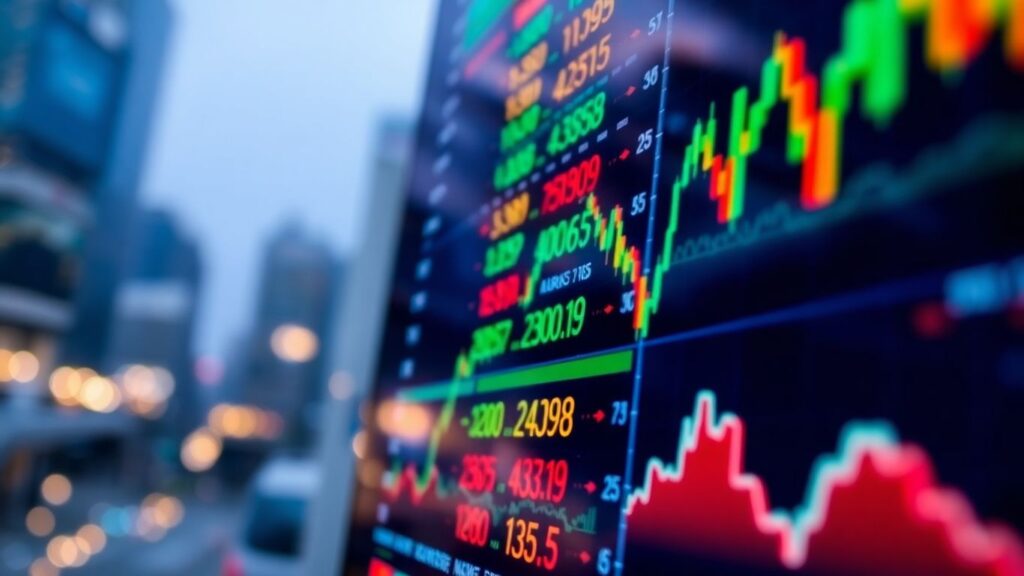
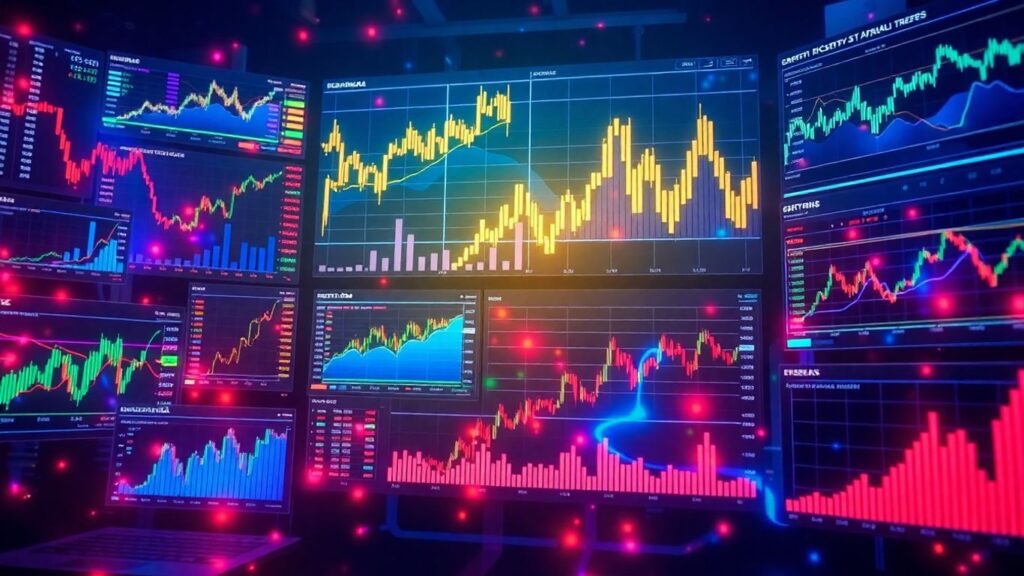
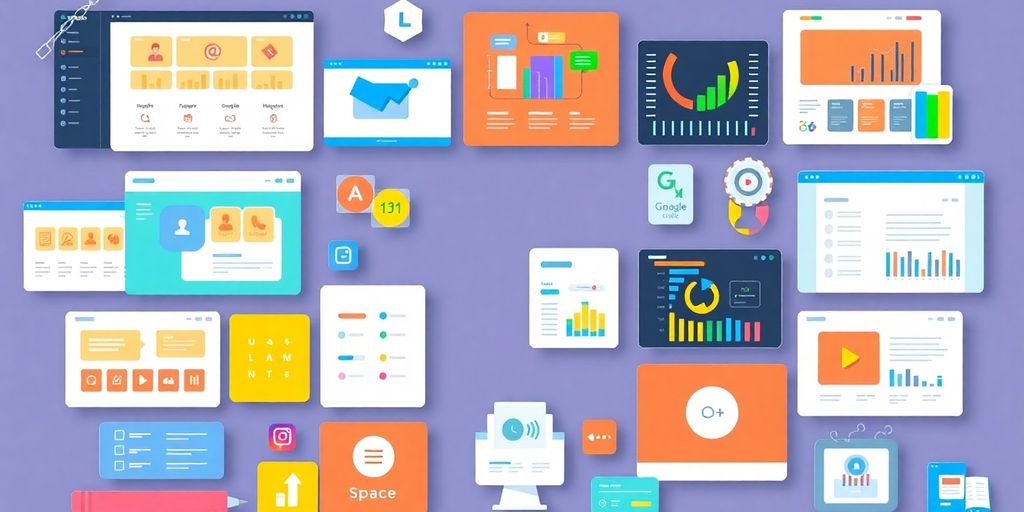

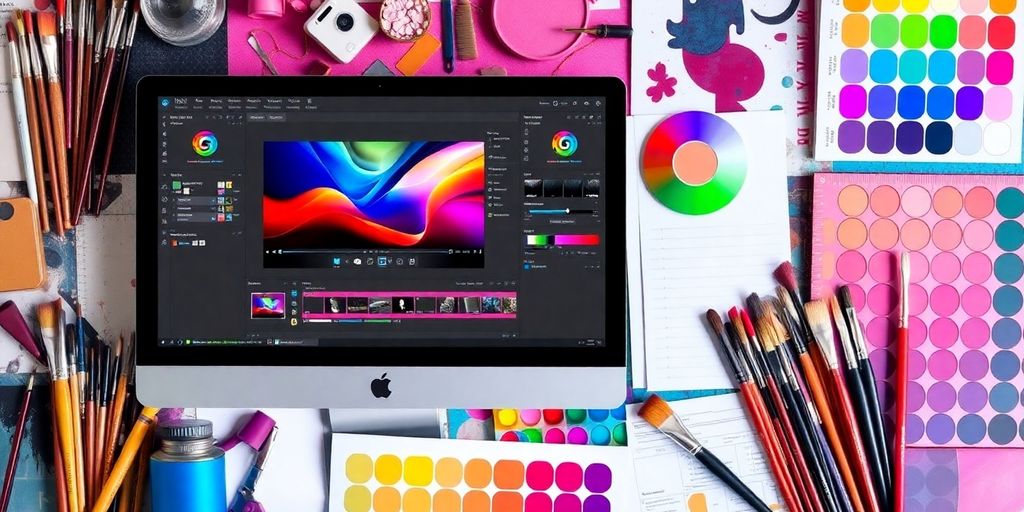
Responses